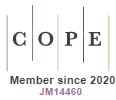Ham radio as an innovative tool in STEM education: a literature review
DOI:
https://doi.org/10.5585/49.2024.27563Keywords:
STEM Education, amateur radio, active learning, interdisciplinarity, educational innovationAbstract
This article aims to explore the use of amateur radio as an innovative tool in STEM (Science, Technology, Engineering, and Mathematics) education through a literature review. STEM education is crucial for preparing students for the challenges of the 21st century, fostering essential skills such as critical thinking, problem-solving, and collaboration. Amateur radio provides a practical and engaging platform for applying these concepts, promoting active and interdisciplinary learning. The review includes an analysis of academic studies, technical articles, and relevant regulations, highlighting the advantages and challenges of integrating amateur radio into the educational curriculum.
Downloads
References
AGÊNCIA NACIONAL DE TELECOMUNICAÇÕES (ANATEL). Regulamentação do Serviço de Radioamador no Brasil. 2023. Disponível em: https://informacoes.anatel.gov.br/legislacao/resolucoes/2023/1834-resolucao-759. Acesso em: 10 jul. 2023.
AMERICAN RADIO RELAY LEAGUE (ARRL). Introduction to Amateur Radio. 2018. Disponível em: https://www.arrl.org/licensing-education-training. Acesso em: 10 jul. 2023.
BYBEE, R. W. The Case for STEM Education: Challenges and Opportunities. NSTA Press, 2013.
CARNEVALE, A. P.; SMITH, N.; MELTON, M. STEM: Science, Technology, Engineering, and Mathematics. Georgetown University Center on Education and the Workforce, 2011.
FERNANDES, P. Challenges in Implementing Amateur Radio in STEM Education. Journal of Educational Technology, v. 14, n. 3, p. 52-60, 2019.
JOHNSON, K. Impact of Amateur Radio on STEM Education. International Journal of STEM Education, v. 4, n. 1, p. 12-25, 2017.
MILLS, G. The Beginner's Handbook of Amateur Radio. McGraw-Hill, 2003.
MITCHELL, S.; THOMAS, G. Practical Applications of STEM through Amateur Radio. Educational Researcher, v. 42, n. 3, p. 131-139, 2013.
MILLER, K.; SONNERT, G.; SADLER, P. Gender Differences in the Benefits of an Influential STEM Program. Science Education, v. 102, n. 5, p. 744-760, 2018.
MOORE, T. J.; GLANCY, A. W.; TANK, K. M.; KERSTEN, J. A.; SMITH, K. A. A Framework for Quality K-12 Engineering Education: Research and Development. Journal of Pre-College Engineering Education Research, v. 4, n. 1, p. 2-13, 2014.
NATIONAL COUNCIL OF TEACHERS OF MATHEMATICS (NCTM). Principles and Standards for School Mathematics. NCTM, 2000.
NATIONAL RESEARCH COUNCIL. A Framework for K-12 Science Education: Practices, Crosscutting Concepts, and Core Ideas. National Academies Press, 2012.
UNIÃO INTERNACIONAL DE TELECOMUNICAÇÕES (UIT). Regulamento das Radiocomunicações. 2012. Disponível em: https://www.itu.int/en/ITU-R/Pages/default.aspx. Acesso em: 10 jul. 2023.
Downloads
Published
How to Cite
Issue
Section
License
Copyright (c) 2024 Moisés Figueiredo da Silva, Luciano Henrique Trindade, Antonio Pires Barbosa

This work is licensed under a Creative Commons Attribution-NonCommercial-ShareAlike 4.0 International License.






